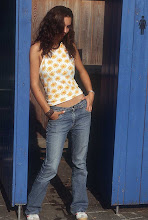Despite the very dry season, we are still enjoying lots of blackberries, and with enough jelly and syrup to last several years down in my canning storage area, it is time to turn to Blackberry Wine. Okay, Max, I can hear you now. “There goes Erma and another one of her booze recipes.” So, I use a lot of alcohol in my cooking. Isn’t that better than all those artificial, unpronounceable chemicals that are in most processed foods? Have you read, or tried to read and pronounce, the ingredients in the stuff that is on the grocery shelves?
Last night we had Mexican and I made the mistake of reading what was in the flour tortillas. Flour tortillas are flour and water. Right? Not these. There must have been at least 15 chemicals, no doubt to add shelf life to the tortillas.
Well, to get back to my “excessive” use of alcohol in cooking. I figure that bourbon, brandy, and wine are more “natural” and healthy than chemicals. Yes, I know that there is a lot of chemical wines coming on the market, but we have been making our own wine for years.
The making of high caliber wines does involve a lot of work and time, but for everyday consumption, you can make a tolerable table wine with not a lot of skill or effort. After all, Europeans have been doing this for thousands of years. Think the old Greeks and Romans had high tech wine making facilities? Hardly.
Blackberry wine has to be about the easiest and most fool proof of the wines. While we were at Monticello the guide showed us Jefferson’s grape arbors and told us that he was a failure at growing fine wine grapes. None the less, he made some fruit wines that he consumed along with the imported French, Portuguese, and Italian wines that were probably for special occasions.
We still use a recipe that came out of a 150 year old cookbook, and, I am sure, that you would find the same instructions in records from the Medieval Period. Nowadays, we buy some yeasts from a home wine supplier, and add to the goop, so that we end up with wine, sherry, and champagne. Some batches are better than others, but isn’t it the same for the vineyards? With this recipe, you have the satisfaction of knowing your wine is “all natural, with no artificial flavors or additives” as the old ad goes.
This works with any kind of juicy fruits. With blackberry however, you end up with a beautiful crimson color.
Blackberry Wine:
Wash and pick over the blackberries. To each measure of mashed berries, use the same amount of cold water. Put into a stone jar and let stand three days; strain through a coarse cloth. To every gallon of juice add three pounds of white sugar, stir well; pour back into stone jar, let stand three days more, then strain again. Put into a stone jar, cover with thick cloth, let stand in a cool place three months and then bottle.
Is anything easier, Max?

No comments:
Post a Comment